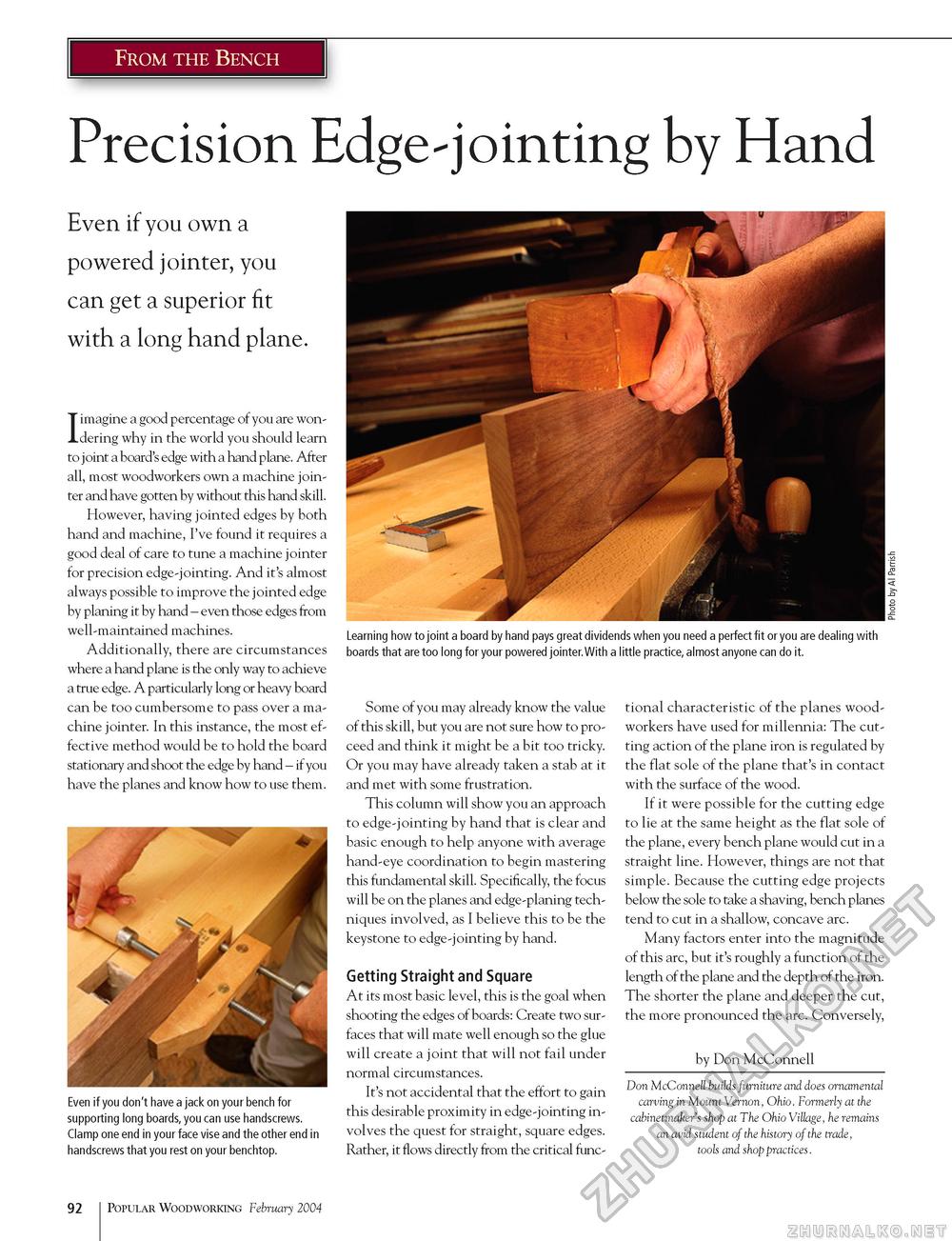Popular Woodworking 2004-02 № 139, страница 94
From the Bench Precision Edge-jointing by Hand Even if you own a powered jointer, you can get a superior fit with a long hand plane. I imagine a good percentage of you are wondering why in the world you should learn to joint a board's edge with a hand plane. After all, most woodworkers own a machine jointer and have gotten by without this hand skill. However, having jointed edges by both hand and machine, I've found it requires a good deal of care to tune a machine jointer for precision edge-jointing. And it's almost always possible to improve the jointed edge by planing it by hand - even those edges from well-maintained machines. Additionally, there are circumstances where a hand plane is the only way to achieve a true edge. A particularly long or heavy board can be too cumbersome to pass over a machine jointer. In this instance, the most effective method would be to hold the board stationary and shoot the edge by hand - if you have the planes and know how to use them. Learning how to joint a board by hand pays great dividends when you need a perfect fit or you are dealing with boards that are too long for your powered jointer.With a little practice, almost anyone can do it. Even if you don't have a jack on your bench for supporting long boards, you can use handscrews. Clamp one end in your face vise and the other end in handscrews that you rest on your benchtop. Some of you may already know the value of this skill, but you are not sure how to proceed and think it might be a bit too tricky. Or you may have already taken a stab at it and met with some frustration. This column will show you an approach to edge-jointing by hand that is clear and basic enough to help anyone with average hand-eye coordination to begin mastering this fundamental skill. Specifically, the focus will be on the planes and edge-planing techniques involved, as I believe this to be the keystone to edge-jointing by hand. Getting Straight and Square At its most basic level, this is the goal when shooting the edges of boards: Create two surfaces that will mate well enough so the glue will create a joint that will not fail under normal circumstances. It's not accidental that the effort to gain this desirable proximity in edge-jointing involves the quest for straight, square edges. Rather, it flows directly from the critical func tional characteristic of the planes woodworkers have used for millennia: The cutting action of the plane iron is regulated by the flat sole of the plane that's in contact with the surface of the wood. If it were possible for the cutting edge to lie at the same height as the flat sole of the plane, every bench plane would cut in a straight line. However, things are not that simple. Because the cutting edge projects below the sole to take a shaving, bench planes tend to cut in a shallow, concave arc. Many factors enter into the magnitude of this arc, but it's roughly a function of the length of the plane and the depth of the iron. The shorter the plane and deeper the cut, the more pronounced the arc. Conversely, by Don McConnell Don McConnell builds furniture and does ornamental carving in Mount Vernon, Ohio. Formerly at the cabinetmaker's shop at The Ohio Village, he remains an avid student of the history of the trade, tools and shop practices. 92 Popular Woodworking February 2004 |








